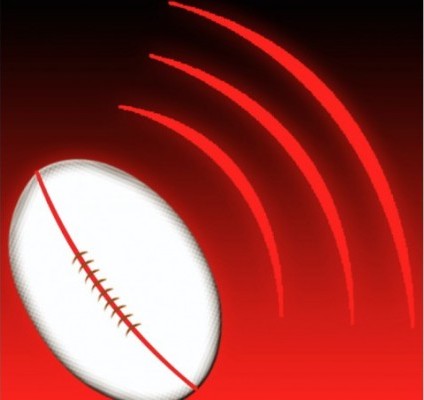Who Plays Where in Women's College Rugby
Who Plays Where in Women's College Rugby
Who is what and where in college rugby?
It's a question we know players and fans struggle with every year, and every year it seems to become more complicated. Actually this year is probably a little less complicated than last year ... as we have said a few times, the market forces tend to push teams and conferences to the competitions they should be in. That's not to say we have perfect equilibrium, because we don't. But for the moment here's how things are organized.
NIRA
NIRA is for NCAA varsity programs. Not all NCAA varsity teams are in NIRA, but only one or two are outside this umbrella, and that's for geographic reasons. NIRA is divided into DI, DII, and DIII, with some newer programs in those divisions easing their way into playing in the postseason.
The NIRA DI is one of the two strongest levels of women's collegiate rugby in the USA. The NIRA DII is pretty strong, too, and probably above the level of collegiate club D1. Yes you might find a very strong club team that beats an NCAA DII team, but not often. The DIII is very strong, too.
NIRA's DI has a league of 11 teams, while the DII is seven teams and DIII 10.
All of the NIRA teams play a fall regular season and the fall is capped off with a championship weekend on November 18. In the spring, they can play a limited number of 15s games or 7s tournaments.
| NIRA | ||
| DI Teams | DII Teams | DIII Teams |
| Army | AIC | Adrian |
| Brown | Davenport | Bowdoin |
| Dartmouth | Frostburg State | Castleton |
| Harvard | Lander | Emory & Henry |
| LIU | New Haven | Guilford |
| Mount St. Mary's | West Chester | Manhattanville |
| Navy | Newberry | New England College |
| Princeton | Norwich | |
| Queens | University of New England | |
| Quinnipiac | Warren Wilson | |
| Sacred Heart | ||
D1 Elite
Populated largely by school-supported teams or teams that combine school support with alumni support, D1 Elite has now expanded to six teams.
D1 Elite Teams:
BYU
Central Washington
Grand Canyon
Life University
Lindenwood
Penn State
These teams, combined with NIRA DI, form the strongest level of collegiate rugby in the nation.
After a year experimenting with a championship in the fall, D1 Elite has now expanded to a really robust schedule, with teams playing everyone else (as far as we can see) twice from September into March. With the six teams located all over the country, this actually helps the league. Life doesn't have to play at home when it's hot and starts on their season on the road, because then when there's still snow on the ground for the likes of Penn State and Central Washington, Life can host. The semifinals are slated for March 30, with the final on May 4.
But the key is, this format gives these programs eight really challenging rugby games through the season.
D1 Club
Women's D1 college teams play under NCR or under CRAA.
NCR has five conferences (South Atlantic, Midwest, Big 10, Lonestar, Allegheny) as well as a few independent teams. The total number of teams competing in this level is about 30 (maybe a little less than that). They all play their conference schedules and then hit the playoffs in the late fall. With a couple of exceptions (Southern Nazarene, Notre Dame College, for example) these are club teams supported by student-athletes and alumni. SNY and NDC are school-supported. Where they call in the pecking order of women's college rugby can be figured out with a few crossover matches. NDC, which finished 2nd in NCR's playoffs to champs Michigan, played Davenport and lost 59-21. NDC won the rest of their games by large margins ... until the final where they lost 41-14. Michigan won all of their other games by significant margins.
Northern Iowa, which made the NCR semifinals, lost 76-12 to Queens. So it's fair to say that NCR D1 is not as strong as NIRA DII.
CRAA also has a women's D1 bracket and that includes five conferences totaling about 33 teams. That number is down from last season because the five Carolinas teams moved to NCR, two teams moved to D1 Elite, and Navy is now in NIRA. Where this level fits in the pecking order is difficult because some of these conferences basically play within themselves and that's it. The teams that played outside their area—BYU, Navy—are perhaps not representative. Certainly BYU is not as they were clearly much stronger than other teams they played. Navy won CRAA D1 last fall over Utah State in a competitive match. They did lose three 15s matches, with a fairly convincing loss to Davenport that mirrors NDC's loss, and then two very close losses to AIC and Queens. They did beat Lander, New Haven, and West Chester, and also beat Virginia Tech by a fairly wide margin.
Overall this says that CRAA's D1 and NCR's D1 are probably comparable, with the top end of CRAA perhaps a little stronger, although there's not really enough data.
CRAA plays to a fall championship for some of the conferences, and a spring championship for others. With BYU involved the last two years the team they were supposed to play in the final, Virginia, did not participate and in fact now have moved with their conference to NCR. How the spring championship is handled, with teams from Pacific Desert, Pacific Mountain, and Florida, remains to be seen.
D2 Club
While CRAA does have a West Coast D2 competition, with three conferences and about 15 teams, won in very impressive fashion the last two years by Claremont Colleges. Their championship, however, is in the spring and the conferences are in warm-weather regions, and that is what will keep them within CRAA most likely.
For the vast majority of women's D2 competition, NCR is who runs it. The last couple of years ACRA ran a competing D2 competition that was, arguably, stronger than NCR's, with Vassar shining at the top. But those conferences have moved to NCR (not without some resistance but there they are). By our count now, NCR has about 13 women's D2 conferences representing about about 84 teams (give or take one or two) heavily concentrating in the North and the East.
All of those teams play their conference schedule in the fall and run through an extensive playoffs to finish off in December. NCR has expanded their women's D2 bracket to include 40 teams.
Which is stronger? Well we actually talked about this in an article last fall here>>. In that article we concluded that the top of ACRA, NCR D2, and NIRA DIII were so close as to make no difference. CRAA's spring D2 final had not been played yet but, objectively, having seen all bu UW-Eau Claire in person last season, we at GRR World HQ would say Claremont Colleges was stronger than those other three, but that doesn't mean their competition as a whole is stronger. NCR's is very robust and it's fair to say that right now that the four semifinalists in NCR's D2 will be four very strong teams.
Small College
This is almost fully controlled by NCR, which, of course, began as NSCRO (National Small College Rugby Organization). These teams all play their 15s championships in the fall.
Wrapping It All Up
The order of competition strength as we see it. So when you tell people you've won a national championship and they ask what that means, you can tell them. But it's also worth noting that a team from one division could beat a team from another division. We're looking at the overall strength of the teams in those divisions and making a judgment.
Top Level: D1 Elite and NIRA DI
It's possible, with a few more crossover games this year, that we might see some separation here.
2nd Level: NIRA DII
The teams playing to the postseason are all quite strong.
2nd Level A: CRAA D1
As we said above, the strongest teams in this division have moved to other competitions, so there are some questions to answer here ... questions we don't expect to resolve because of a fairly hard-line separation between the CRAA conferences and the NCR conferences.
3rd Level: NCR D1
There's parity between CRAA D1 and NCR D1 among the best teams, we believe, but as you go through the middle of the pack CRAA seems to be stronger.
4th Level: NIRA DIII
4th Level A: NCR D2
4th Level B: CRAA D2
As powerful as we think the best CRAA team is, overall NCR has a lot of very good D2 teams and a lot more depth in conferences. NIRA gets the top spot because even the least-strong teams have a daily training environment.
5th Level: Small College
Not to denigrate this level—some excellent players come out of it and the best teams can play. We would not be surprised at all if a small-college team beat a D2 or event a lower-level D1 team. It could easily happen. But overall, these rosters are smaller and it is much tougher to get through a season against the higher divisions, which is why they're here.
Championship Finals
NIRA DI: November 18, Cambridge, Mass.
NIRA DII: November 18, Cambridge, Mass.
NIRA DIII: November 18, Cambridge, Mass.
D1 Elite: May 4, 2024, Houston, Texas
CRAA D1 Fall: December 2, Charlotte, NC.
CRAA D1 Spring: May 4, 2024, Houston, Texas
CRAA D2: May 4, 2024, Houston, Texas
NCR D1: December 2, Houston, Texas
NCR D2: December 2, Houston, Texas
NCR Small College:: December 2, Houston, Texas
So that's 10 15-a-side championship finals. No wonder people are confused.











